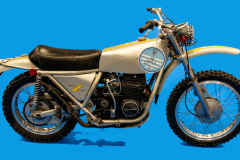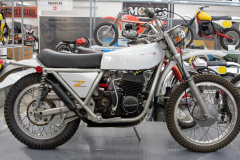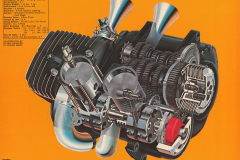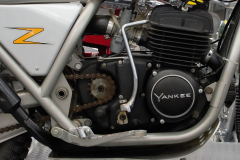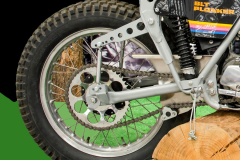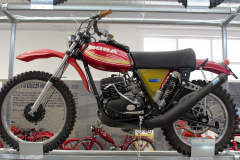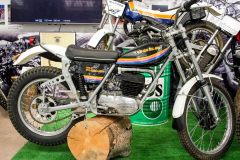Last updated on December 15, 2023
by Mike Ricketts
This article attempts to address the timeline of the development of the Yankee 500Z and, subsequently, the OSSA Yankee 500 as they are NOT the same thing. It is a multifaceted and complex story that is often incorrectly reported outside of the more knowledgeable US motorcycle press. The Yankee 500Z was not a Spanish motorcycle and was conceived, designed, and built in the US. I have seen bikes in Museums with incorrect caption cards which, of course, just amplifies the error to more people, who then go on to repeat it. This article attempts to clarify some of the more common misconceptions and outline a timeline of the development of each of the two, very different bikes.
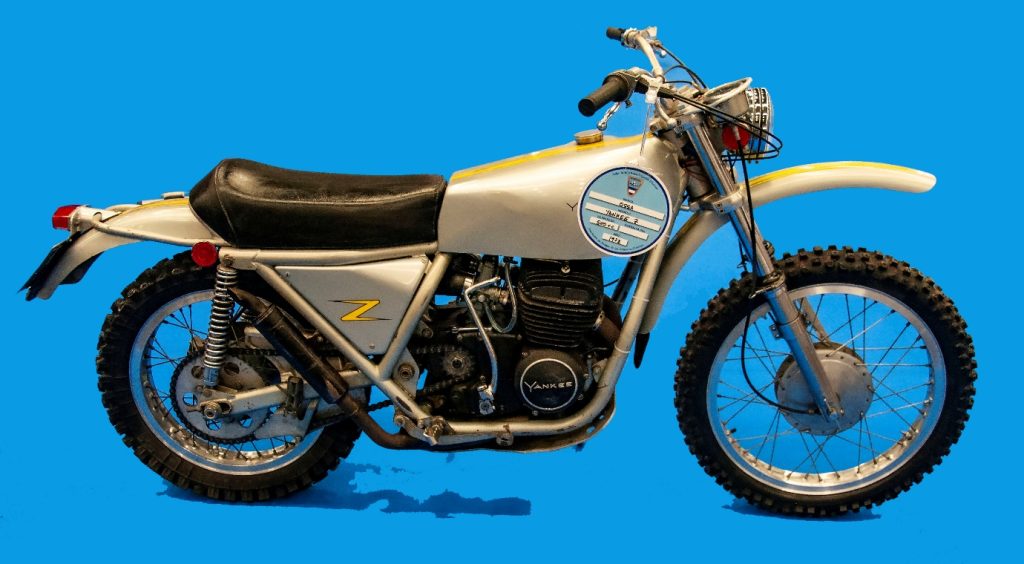
Reference sources vary on some aspects of the story, but I have tried to keep to documented facts. I have a copy of a transcript of a wide-ranging interview given by Eduardo Giró on the history and eventual demise of OSSA, and the Yankee 500Z saga is understandably featured, but to balance this, there are magazine articles written by or featuring the memories of former Yankee Motors employees.
I have split the story into 3 distinct parts, starting with the Yankee 500Z. The second part covers the development of the OSSA Yankee 500, finishing off with the third part, detailing a bike developed in the small workshop of a Spanish genius. Of necessity, each part occasionally covers the same timeline.
So, to start at the beginning and the story begins in the United States and their passion for dirt track racing (cars and bikes). Dirt track bike racing was a hugely popular sport in the US after WW2 and the American Motorcyclist Association (AMA) created a racing series in 1954 – the Grand National Series, which comprised five different types of competitions: four of the competitions (Mile, Half-mile, TT, and Short Track) were held on dirt tracks, while the fifth was held on tarmac courses. This format survived until 1985, after which the tarmac courses were dropped.
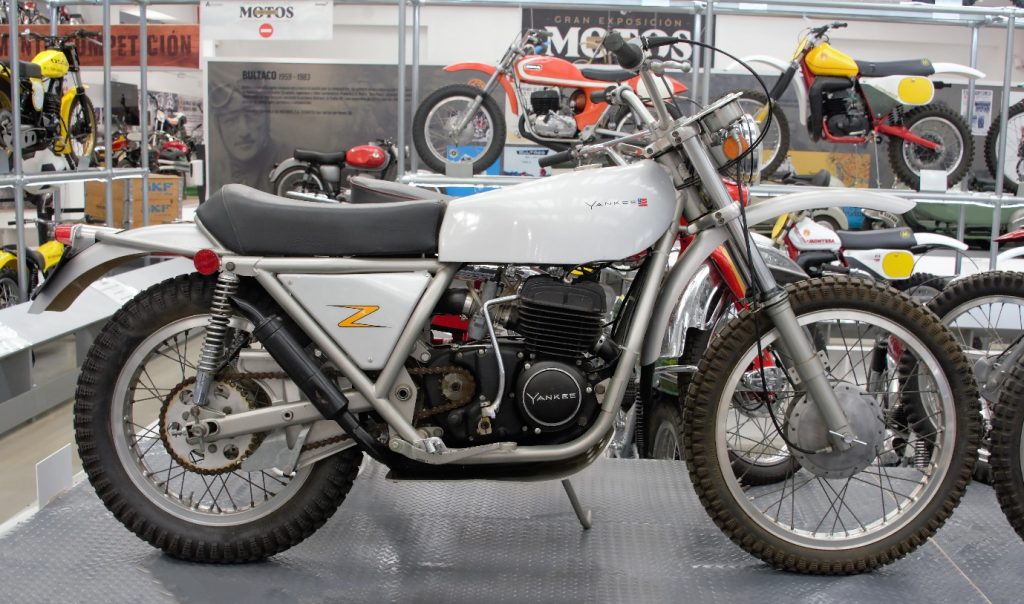
John Taylor (June 1933 – March 2017) was a US citizen who had worked for an international machine tool company prior to becoming a Bultaco importer in 1962, when he is credited with persuading Bultaco to produce the 200cc (later 250cc and 350cc) Matador street-scrambler for the US market. Taylor had won a Bronze Medal at the 1964 International Six Days Trial (ISDT), and he had ambitions to create a powerful enduro bike with a twin-cylinder, two-stroke engine. There is anecdotal evidence that Taylor had first approached Bultaco as a potential supplier, but they declined. It is said that OSSA agreed to design and build the engine, but they wanted Taylor to become their US concessionaire, which he did from 1967 until 1978.
In 1967, John Taylor created the Yankee Motor Corporation, based in Schenectady, New York – and he was joined there by Dick Mann, a legendary US motorcycle rider, skilled in a wide range of disciplines and a talented frame builder and designer. In 1970, after competing on an Ossa 230cc dirt track bike with great success, Mann designed and built the highly successful OSSA based Dick Mann Replica (DMR) and it was put into a short run of production by Yankee Motors, with 150 units being produced.
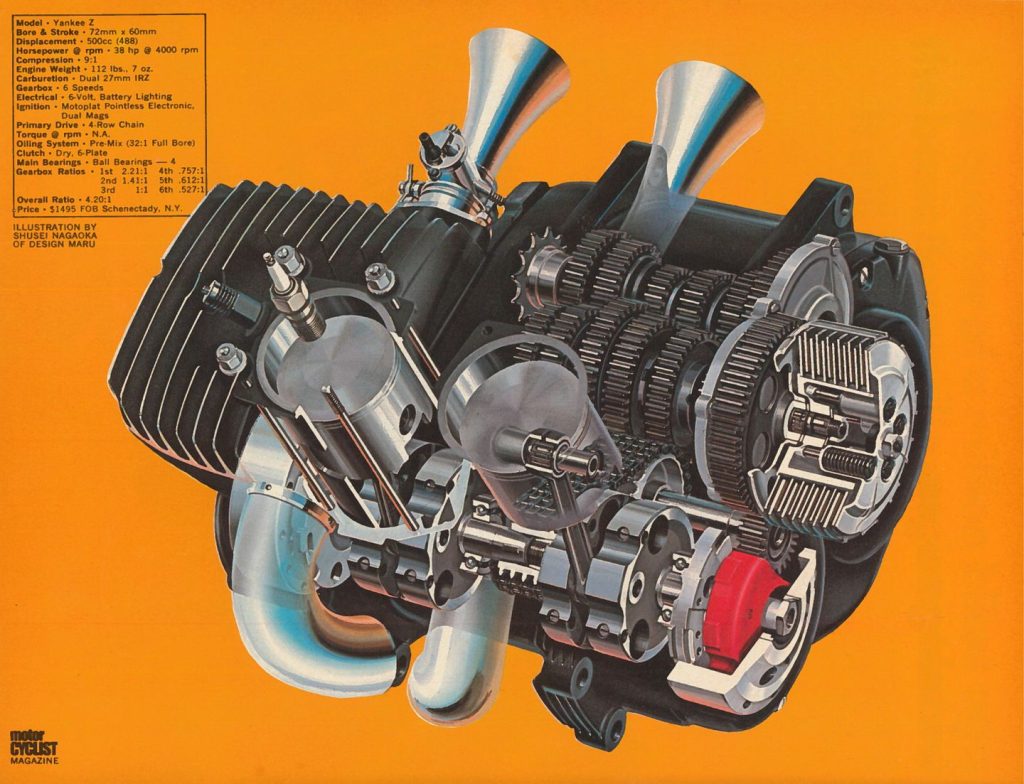
In 1969, Yankee Motors received an investment package with the Bangor Punta Corporation, a Fortune 500 listed company that owned several well-known brands that included Piper Aircraft and Smith & Wesson, the Gunmakers.
The Dick Mann designed frame for the Yankee 500Z project was constructed of an aircraft-grade 4130 chromium molybdenum alloy steel (reputedly from Piper Aircraft stocks), with Telesco 42mm front forks and Telesco rear shocks. The forged aluminium fork crowns were produced by Smith and Wesson Company of Springfield. The seat and fuel tank were constructed from fibre glass and the seat incorporated a quick-release mechanism that allowed quick access to the air filter system. They used a 21-inch front wheel with a Single Leading Shoe front brake and an 18-inch rear wheel which, in a first for an off-road bike, incorporated a Kelsey-Hayes disc brake assembly, the thinking being that it would effectively be self-cleaning.
Eduardo Giró had already considered designs for a twin cylinder engine for European road racing, but OSSA were not in a strong financial situation. When approached by Taylor, Giró had some reticence but, following meetings in Spain and the US during 1966/67, an agreement was reached. The prototype engine was a 460cc engine (based on the cylinders, pistons and cylinder heads of the 230cc engines on a common crankshaft). The design had two carburettors and a five or six-speed transmission. Yankee Motors fitted this first engine into the frame designed by Dick Mann and built “in house” at the Yankee Motors Schenectady facility and the prototype was shown in 1968.
The engine design was revolutionary as traditional thinking has flexibility at the heart of road racing engines, whilst dirt track racing requires maximum torque. Eduardo Giró had studied (and used high speed cameras) to investigate traction and rear wheel responses in sand and his design was a “Twingle” or “Big Bang” – an engine that was a twin cylinder but capable of being set up having the pistons fire at the same time or firing at a more traditional interval. This was achieved by having the crankshafts joined by splining. In theory, the engine could have the set-up altered, but it was envisaged that the engine would be set once, on assembly, for the desired end-use.
Further discussions revised the specification of the engine for what would become the Yankee 500Z. OSSA would provide the engine with a six-speed integral gearbox and an increased capacity of 488cc by using the cylinders, pistons, and cylinder heads of two of the 250cc OSSA Pioneer engines. These engines would be exported to the US where Yankee Motors would build the frames, source the other cycle parts and assemble and market the finished machine.
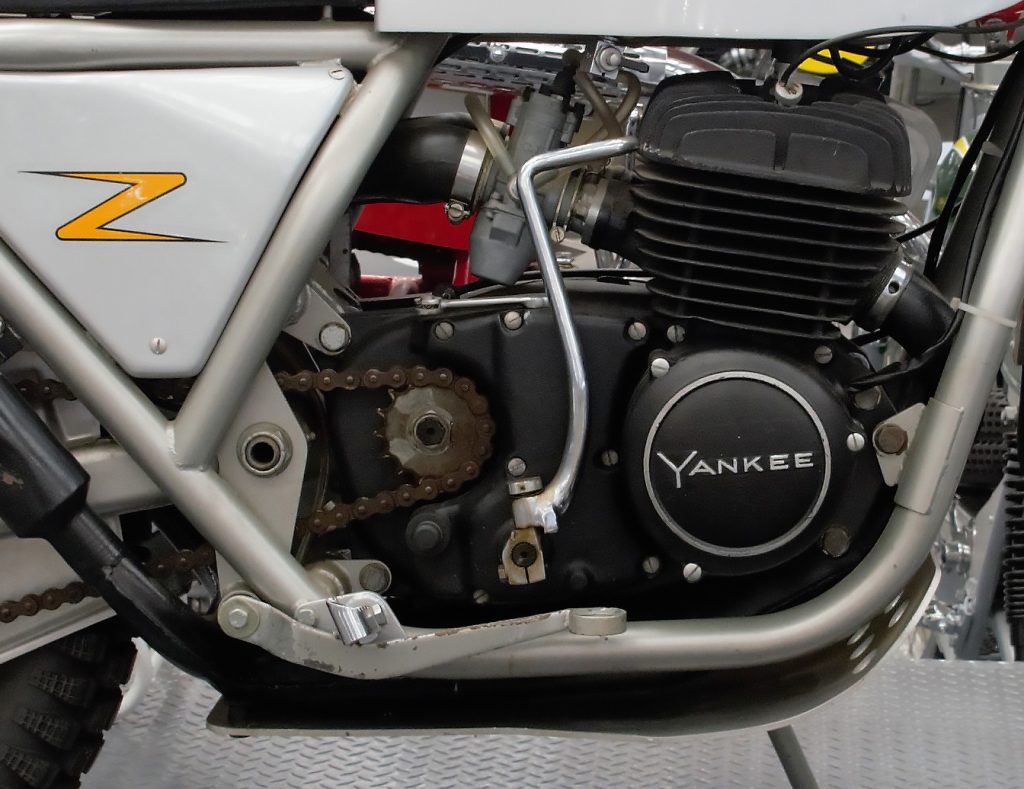
The 3 years between the prototype being unveiled and the Yankee 500Z entering production obviously damaged the projected sales and demand. Problems were compounded in 1971 by the Nixon Administration’s decision to bring in a fiscal package of restrictions aimed at controlling inflation. Amongst these were import controls that almost doubled the cost of the OSSA engines being imported. The Yankee Motors Corporation was part of a larger group, but the financing of the project only lasted 2 years, and eventually, the production of the Yankee 500Z was limited to 765 complete bikes before Yankee Motors ran into the financial difficulties that eventually led to bankruptcy in 1972/3 when their support by the Bangor Punta Corporation ran out.
The collapse of Yankee Motors created a nightmare situation for OSSA, who were themselves in a difficult financial situation, having invested heavily in tools and equipment to create the twin-cylinder engine. While the Yankee Motors bankruptcy left OSSA with a large part of its investment unpaid, John Taylor retained the OSSA Import and Distribution network until 1978.
Despite the collapse of the Yankee 500Z project, John Taylor was still an influential designer and innovator. He collaborated with Joe Bolger, a very successful competitor in motorcycle scrambling, to incorporate the Bolger groundbreaking suspension system onto an OSSA.
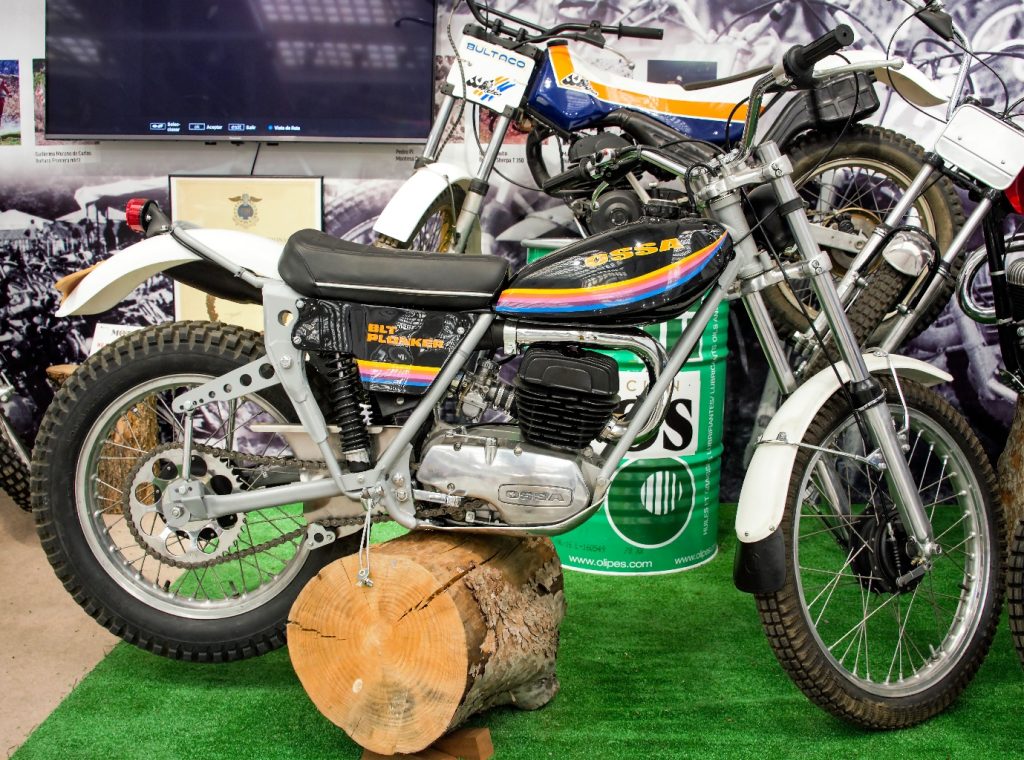
Bolger had created a linked, rising-rate, long-travel suspension system that became known as the BLT (Bolger Long Travel). A detailed description is beyond the scope of this article, but Taylor incorporated the system on an OSSA Plonker 250cc – the OSSA Plonker BLT. The original Plonker was built in conjunction with Mick Andrews and was succeeded by the OSSA Mick Andrews Replica (MAR). The use of Bolger suspension kits was extended to OSSA Phantom models, but I have not been able to find details of how many. I have read that only about a dozen Plonker BLT models were built and that the kit was marketed as an after-sales accessory for the Phantom model.
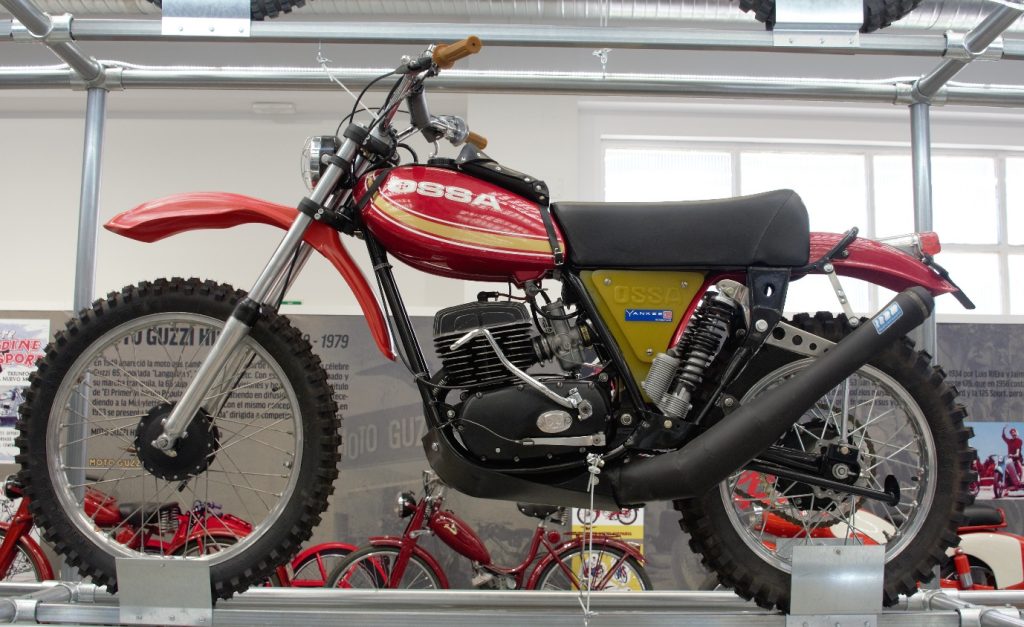
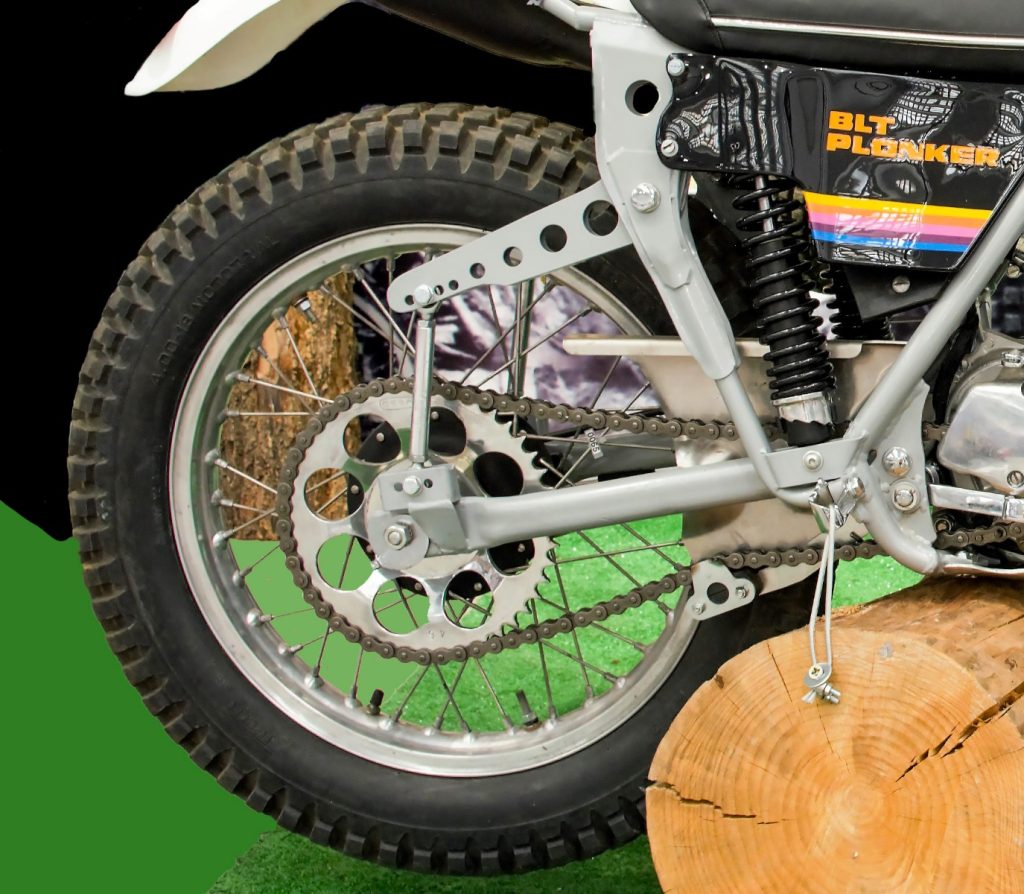
There are some footnotes to the main characters in this first part of the story of these distinctly different bikes. John Taylor never lost faith in the Yankee 500Z project. These days, Enduro competitors are likely to load their machines on a trailer or in a van, travel to an event and compete, and then return home via a jet wash. The beauty (and simplicity) of the Yankee 500Z was that you could ride it to an event, compete and ride it home afterwards. One US Motorcycle Magazine speculated that John Taylor was probably 20 years ahead of the times in his thinking. After the failure of the Yankee 500Z, Taylor continued with the OSSA distribution until 1978. After this, he became an importer for the Italian SWM SV.VM (Sironi Vergani Vimercate Milano) and Laverda manufacturers for a short time. Retired and in his 70s, John Taylor continued to attend OSSA and Yankee Shows in the US. John Taylor passed away in 2017.
Dick Mann had continued riding professionally into the late 1970s. In addition, in 1975, he started designing frames for the Yamaha XT 500. In all he sold some 200 frames for this engine in four marques, the final frames being completed in 1982. Having won both the Grand National Championship and the Daytona 200, more than once, Dick Mann was inducted into the Motorsports Hall of Fame of America. He was active in the restoration of historic race bikes and passed away in April 1921.

